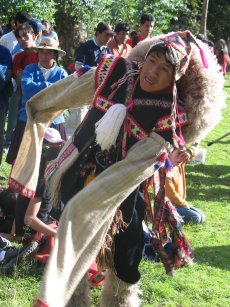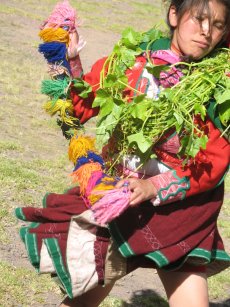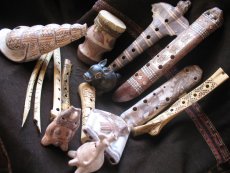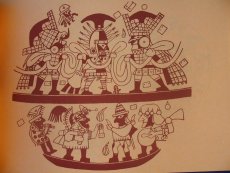INDIGENOUS TRADITIONAL MUSIC
COURSES AND WORKSHOPS
Make cry… blow… are the indigenous expressions for what we call music, as this term does not exist in the Quechua and Aimara languages. Then, what is what we call music to them?
In the indigenous concept, the fact of producing melodies and rhythms is related to the plants´ growth process, the dialog between the world of the living and that of the ancestors, as well as to cosmic movements. Therefore, “music” is part of nature and of their lives, as a means that unifies and interrelates.
We´ll get to know the cultural background of indigenous music, experimenting at the same time, with traditional grooves, songs and melodies.
Themes:
Music and cosmology
Warmi – Qhari (Woman – Man) – the musical instruments´ “sexualization”.
“We celebrate, and therefore, we exist” – Existence on the basis of “relationability”, as a counter-position to individuality. Let´s experience the “communitas” and collectivity through music.
The “animu, sami” – the principle of the animating essence, in relation with musical instruments.
Pitay phullu: Ayarachi music and dance from Paratia, Puno
(By Angel Romero).
Music and songs in
ritual competitions and battles
“The blood fertilizes the earth”: Music and musical instruments in ritual combats (Tupay and tinkuy). Music acts like a means for animating and for predictions. Part played by the flutes and drums in the rites of passage.
Music from the ritual battles in Ch´iaraje, Cusco
(By Wiñay Productions).
Music and its relation with the seasons of the year
In the Andes, the seasons are defined as the dry and humid seasons. Therefore, the musical practice is also integrated within that cycle.
Dry season: The Pleiades disappear with the winter solstice and the sikureadas and kena kenas appear (High plains´ collective music).
Humid season: The Pleiades culminate with the invocation to and welcoming of the ancestors – Tarkeadas and pinkilladas (High plains´ collective music).


Musical instruments: An ethnographic and
ethno-historical panorama
-Sounds and Messages from Our Ancestors´ Times: Pre-Colombian instruments, the possible ways of playing them, with iconological and organological analysis. We will use samples of replicas found in museums.
-The Ancestors´ Musical Heritage: The high plateaus´ traditional “orchestras”, such as sikureadas, tarkeadas and quena quenas, with their distribution, as well as the instruments´ hierarchical structure and that of the participants.
-Between Tradition and Modernity: Southern Peru´s musical instruments and formations, with the magic and aesthetics of today´s musical syncretism expressed in the musical ensembles.


“During the rainy season, “carnival” runs out of the river. It is a group composed of several people who walk around the mountains, playing pinkuyllus and singing qhashwas. At certain hours of the day or night, you might meet them. To your eyes, there are your friends, neighbors and acquaintances, dancing and singing… But, in reality, they are not what they seem to be. It´s the carnival and it can take you away and you might never come back. “
(Gathered in Chumbivilcas, Cusco)
Moche Iconography (100 AD – 800 AD)



